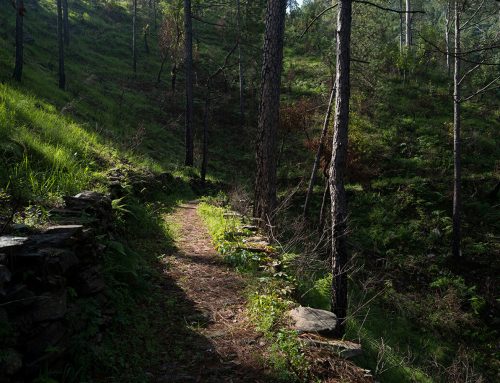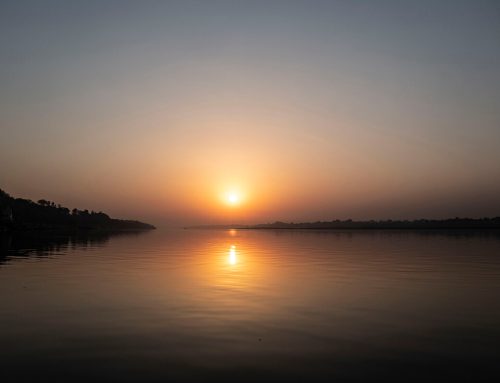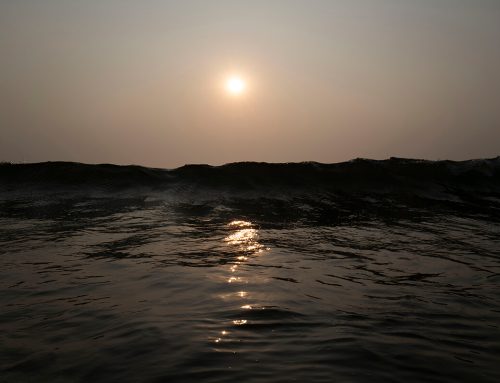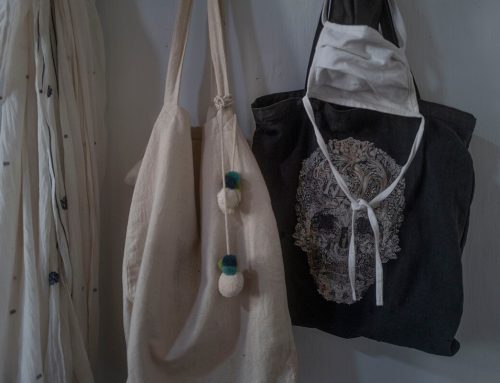Tashiding Monastery

Road Sign, West Sikkim
Tashiding Monastery sits on the top of a heart-shaped hill rising between the Rathong River and the Rangit River. A Buddhist friend told me that I just had to come here and stay up on the mountain. There are several legends linked to the most revered monastery in Sikkim. Guru Rinpoche is said to have shot an arrow into the air and then meditated on the spot where it landed and, eventually, the site became Tashiding Monastery. Another legend relates to the three monks who consecrated the first Chogyal of Sikkim at Yuksom. Apparently, they saw an unusual phenomenon of bright light shining on top of the Kanchendzonga that reflected to a site near the place where the present Tashiding Monastery has been built. Also, a scented smell of incense and divine music was also noted. My friend also mentioned that a very venerable lama was making his way to Tashiding, but when he saw the monastery from below he believed that it was too pure for him to go up to and so he left. Not sure what I’m doing here, but I’m staying in a guesthouse up on the mountain and soaking up every pure ray to be found.

Tashiding, West Sikkim
Tashiding is a very special place for my guru, Dzongsar Jamyang Khentsye Rinpoche (DJKR). To understand the significance we need to go back the legends surrounding Lhatsün Namkha Jikmé (1597-1653), the terton who open the gates to Sikkim and coronated the first Choygal, bringing the Dharma to Sikkim. In the words of DJKR, Lhatsün Namkha Jikmé (1597-1653) is the Tibetan visionary-saint and the author of the Riwo Sangcho (smoke offering practice). He was an incarnation of both the great Dzogchen master Vimalamitra, who attained ja lü phowa chenpo (where the master dissolves his body into rainbow light and lives for centuries in order to benefit others), and the omniscient Longchenpa. He was born in 1597 at Jaryül in southern Tibet. At birth, the space between his eyebrows and the tips of his tongue and nose were all very clearly marked with the seed-syllable AH. He is considered to be one of the most accomplished masters that ever lived.

Tashiding, West Sikkim
In 1646, at the request of his teachers, Lhatsün Namkha Jikmé, and 15 of his disciples, went on foot to discover the hidden land in Sikkim, as a place of refuge from the violent upheavals in Tibet where the Gelugpa sect were clashing with the Kagyupa, Nyingmapa and Bon practitioners. After many unsuccessful attempts, the terton finally summoned up enough siddhi powers to cut a pass across a mountain that blocked his route to Sikkim and was able to surmount the northern gate. (Lhatsün Namkha Jikmé is known for magical powers like the time he stopped a huge avalanche simply by gazing at it while making the ‘threatening mudra’.) Just as his disciples had given him up for dead and were preparing to return to Tibet, they heard his powerful Gyaling (thigh-bone trumpet) resounding through space announcing his success in finding a route across. He is so special here that he is depicted similar to Guru Rinpoche himself, with the only difference that instead of holding a five-pronged vajra in his right hand, Lhatsun has a gyaling. He made Kanchendzonga integral to the Buddhist practice and the social identity of Sikkim.

Lhatsün Namkha Jikmé, Tashiding, West Sikkim
He taught Dzogchen widely in Sikkim, establishing an unbroken lineage that continues to this day. More than 200 of his writings have survived, including his hand-written journal that is preserved in the remote Tholung Monastery in Dzongu, North Sikkim, and is said to contain elaborate details of how he unlocked the northern gate. His incarnation, Jigme Pawo (1982-?) continues his work in Sikkim. Jamyang Khyentse Chokyi Lodro and Dzongsar Jamyang Khentsye Rinpoche are also considered to be incarnations of Lhatsün Namkha Jikmé. Chokyi Lodro states in his autobiography that he had clear memories of his past life as Lhatsün Namkha Jikmé and that he was shown the tantric disciplines by Lhatsun in a vision.

Tashiding Monastery, Sikkim
Tashiding literally means the ‘Central Elevated Glory.’ It truly is a magnificent place with a sense of mystery. DJKR says that Tashiding is actually a replica of Mount Meru. It’s also a place where nuns and yogis have been known to go behind a rock and disappear. There are many places in Sikkim where locals will point to an unusual rock formation and say that these are doors that open for the faithful and lead them to the mythical Shambala.

A steep footpath leads up to the monastery. I’m staying at a homestay just outside the ornately carved gates. I have a lovely green room with two single beds, Tibetan carpets with a red and blue dragon, a great view, and awesome library of Vajarayana books, courtesy of an English/Japanese fellow who is married to the eldest daughter. He’s in retreat and I’ve yet to meet him. There is a very basic shower outside and I get three delicious vegetarian Sikkimese meals a day. Everyone here seems to be a farmer, including the monks who are all ‘householders,’ married and love to drink the local alcoholic beverage chang. A wild bunch, really. Shamanistic. The monks perform pujas and ceremonies when required. On the 14th and 15th day of the first month of the Tibetan Lunar year, thousands of pilgrims come to Tashiding for the annual ‘Bumchu’ festival. Each year, the sacred Bumchu vase, containing holy water blessed by Guru Rinpoche, is opened and oracle priests predict the future for Sikkim bases on the level of water. On occasion, the water level has been known to increase from what was sealed the previous year. It’s mixed with river water and distributed as a powerful blessing to the devotees.

Tashiding, West Sikkim

Tashiding, West Sikkim

Tashiding, West Sikkim

Tashiding, West Sikkim

Tashiding, West Sikkim
Each morning I walk the Kora (the ritual circuit), three times, around the monastery on top of the ridge. I spin the prayer wheels on the outside of the traditional gompas and recite the mantra “Om Mane Padme Hum.” The circuit takes me past the three main gompas, the Mahakala temple, the small building that contains the Holy Bumchu Vase, to the chortens and stupas in the back on the edge of the cliff, and down to some caves and into the bowels of the charnel grounds. On clear days, Kanchendzonga can be seen floating above the clouds in the distance.

Kora, Tashiding, West Sikkim

Tashiding, West Sikkim


An old sculptor, Yanchong Lodil, is here everyday, sitting cross-legged on an old burlap bag in his outdoor studio behind the stupas, while he carves “Om Mane Padme Hum,” and other Tibetan mantras, into rocks to make the delightful mani stones that line the Kora and make the walls of Tashiding. The 94-year-old escaped from Tibet with the Dalai Lama and was a student of Chokyi Lodro. He has worked here for the past 50 years, and his life work surrounds him, thousands of stones … exquisite offerings, lending significantly to the special character of the monastery.

Tashiding, West Sikkim

Tashiding, West Sikkim

Tashiding, West Sikkim

Tashiding, West Sikkim

Tashiding, West Sikkim
I visit the chortens and stupas in the back of Tashiding to pay my respects to Jamyang Khentyse Chökyi Lodrö’s stupa. Chokhi Lodro came here from Tibet and passed into Parinirvana here. Apparently, when Choki Lodro was nearby in Rabonga and looked back to Tashiding, he said that he could see that his body would be cremated at there. That prophesy came true in in 1959. In 1961, Dzongsar Jamyang Khentyse Rinpoche was born in Bhutan, and was immediately recognized as the incarnation of Dzongsar Khyentse Chökyi Lodrö. The stupa is impressive and was recently gold-leafed by one of my favourite Vajra masters, Orygen Tobgyal Rinpoche. I sweep the stupa clean of fallen pin needles. A pair of painted eyes look out from the stupa and give the impression of a giant buddha hidden inside, sitting in mediation. The crossed legs are in the base. The body, up to the shoulders, is the ‘hemisphere,’ and the head is the ‘harmika.’ The symbolism of the stupa can be seen as a psycho-cosmic image of man, where the physical elements and the spiritual counterparts, the different world planes and their corresponding planes of consciousness, merge. On the eastern side of the stupa cluster is a self-manifested engraved Guru Rinpoche image housed in a small shrine.

Tashiding, West Sikkim

Tashiding, West Sikkim
The most famous chorten here is one known as Thongwa-Rang-Grol, and literally means ‘savior by mere sight,’ believed to wash away the sins of anyone who gazes upon it.

Tashiding, West Sikkim
There is a feeling of total peace here at Tashiding. Sometimes it feels deserted and the gompas are closed when the monks are working in the fields. I discover that in the mornings and evenings, a monk opens the main temple to leave water offerings for the Buddhas and Boddhisattvas, so I slip in to meditate in the presence of the deities, otherwise I’m outside with the motley gang of dogs. I’ve sorted them out. There is top dog who is a fierce warrior and gets to eat the puja discards before the others. There is an older dog whose hair is falling out and I pull out in tuffs thinking perhaps it’s shredding its winter coat. These are the healthy ones. Two others seem to have diarrhea and problems with their bottoms hurting that they drag on the ground. Another has open wounds and a skin disease so bad it can hardly find comfort. A dog had a tick under its eye and I gently try to remove it. Perhaps it was ready to come out. Not sure, but a little while later the dog came to show me that the tick and egg were gone. One of them is about to die and I look into its eyes and send love. After a few days, whenever I arrive at the temple gates the dogs are there to greet me.

One day a group of nuns from Himachel Pradesh arrive and the gompas are opened. I join them to see the precious tantric murals on the walls and statues of Guru Rinpoche, Lhatsün Namkha Jikmé, and the two stupas that contain the relics of the Sema Chenpo Puntsok Rigdzin and his grandson Sema Chenpo Rigdzin who established Tashiding in 1641. On the first floor is an exquisite gold statue of Vajrasattva.

Vajrasattva, Tashiding, Sikkim
On the third floor is a special altar with statues of Guru Rinpoche, flanked by his two dakini consorts, and the two tertons Lhatsün Namkha Jikmé and Kathok Rigzin Chenpo. Lhatsün Namkha Jikmé is painted blue and has captivating eyes. He is depicted as slightly smaller than human size and has very refined features. He holds his gayling trumpet and a blue egg that represents the primordial potentiality of the universe. These sculptures are really old and very beautiful, made of clay and hand-painted with tremendous expression. It’s such a treat to see such unique sculptures that don’t exist anywhere else other than here. There is no mold. They are originals.

Tashiding, Sikkim

Tashiding, Sikkim

Tashiding, Sikkim

Tashiding, Sikkim

Tashiding, Sikkim

Tashiding, Sikkim

Tashiding, Sikkim
Another day, a group of women are conducting a puja in the first gompa. The room is filled with very old mani wheels; some made from leather and hand painted, others from wood. They’re painted with exquisite images of the dakinis, representing the female embodiment of enlightened energy, or the evocative energy of movement in space –shunyata, the insubstantiality of all phenomena. These ‘sky dancers’ look like they’re flying when I spin them. I sit down on the wooden benches for two hours of chanting. There is an endless supply of yak butter tea and tsampa. At times, I fall into deep mediation; others I felt hot and prickly, perhaps purifying.

Tashiding, Sikkim

Tashiding, Sikkim

Tashiding, Sikkim

Tashiding, Sikkim
Skulls painted on the door of the Mahakala (Protector of Dharma) temple and the monks are here every day for puja. I’m too intimidated to enter, so sit outside with the dogs and listen to the chanting and drumming.

Tashiding, Sikkim

I see a woman practicing Chod, “Cutting Through the Ego” ritual, in the charnel grounds and I’m careful not to disturb her. I sit down in mediation to see if the realisation of where I am will bring up fear or disturb my mind. It doesn’t. People warn me that the energy is good here in the day, but I’m advised to leave before evening in case I might attract anything. It’s not ghosts, but thunder and raindrops, that made me take a hasty retreat back to the sanctuary of the guesthouse. The thunderstorm is intense with vajra lightning bolts and sheets of rain. The electricity is out and the sky is so dark with swollen rainclouds that there is barely enough light to read at 2 pm. I’m tucked in bed, under the covers, with my torch reading fascinating books like ‘The Psycho-cosmic symbolism of the Buddhist Stupa’ and ‘Civilised Shamans.’ I listen to dharma MP3s and do yoga. Later there are endless cups of chai and conversations with Paul, the owner of this impressive library of Buddhist literature. That night, around 3:30 am I wake up to the most bizarre bird call that sounds like some wailing spirit roaming the sky. Eerie. (This occurs a few times while I’m here.) The sound comes close, then recedes off into the distance. The dog is barking outside the house for an awfully long time. It is disturbed. Fear. I dream that Vajrayogini is in the house and the dogs are scared. I felt her hot breath press against me, energy inside my sternum. I let her inside me and release my fear. In my imagination a dakini has merged with me.

Tashiding, Sikkim
Just outside the monastery gates, a small path turns left and leads to the Shitro cave – the cave of Hundred Peaceful and Wrathful Deities. This is the place where Guru Rinpoche first meditated in Sikkim. It’s a huge honour to be able to be there and the energy is powerful. Perhaps this was the spot his arrow landed. It’s a perfect size cave with good places to sit and the silence consumes me. There is a shrine to Guru Rinpoche covered with white katas and rock where he left and imprint of his foot. I recite his mantra “Om Guru Pema Siddhi Hung” and rub my mala against it.

Guru Rinpoche Cave, Sikkim

Guru Rinpoche Cave, Sikkim
Nearby, is another cave, that according to Paul who has spent a great deal of time here, belonged to Yeshe Tsyogal. At the entrance is some dark reddish substance described as ‘dakini blood’ on the stone and mysterious dakini writing.

Tashiding, Sikkim
Oh no … my crystal mala broke today. I buy some new string from the shop, but it’s too complicated for me to restring the guru bead. This mala has been part of my life since visiting Dharamshala two years ago, and it’s been rubbed against every sacred Buddha and deity I’ve seen since then and has been blessed by numerous Rinpoches, including the Karmapa. I’m really upset by this until someone tells me that it’s actually a very auspicious thing to happen as it symbolizes release of energy. It reminds me of the time I made a Native American drum. I spent a weekend learning how to de-hair and de-flesh a deerskin, and wrap it around a drum frame, and partake in a ceremony to bring the spirit of the drum to life. A few months later on another retreat my drum was warming up near the fire, beside my Cree teacher’s drum and it cracked. I cracked. I was devastated and felt as if I’d lost my child. In truth, my life had become too taught and I had to let a few things go. Perhaps Tashiding has been very transformative and purifying, although I only feel this in retrospect after I’ve left the heart-shaped mountain.

Tashiding, Sikkim
Dzongsar Jamyang Khentsye Rinpoche says in his book What to Do in the Holy Sites of India: “What exactly is the right motivation for going on a pilgrimage? At best, it is to develop wisdom, love, compassion, devotion and a genuine sense of renunciation (renunciation mind). So, as you set out, you should make the wish that your journey, one way or another, will continuously remind you of all of the great noble enlightened qualities of the Buddha, and that as a result you will accumulate merit and purify defilement.”
Tashiding, Sikkim

Tashiding, Sikkim
Continued in SIKKIM: Part 7 – Guru Rinpoche Caves of Sikkim >
Heather Elton is a yogini, writer and photographer living in London.
© Heather Elton
6 Comments
Leave A Comment
You must be logged in to post a comment.







Exceptionally well-written piece. Your article was fantastic.
Thank you! I’m really happy that you took the time to read it and enjoyed it. 🙏
Exceptionally well-written piece. Your article was fantastic.
Thank you! I’m really happy that you took the time to read it and enjoyed it. 🙏
Thank you much Heather Elton for your photos and commentary.
Thank you much Heather Elton for your photos and commentary.